Originally published: Mar 6, 2024
Q: What should government do to address climate change?
A: “Addressing climate change” is the wrong target; we want to reduce climate danger. And the proven way to do that is: let us use all forms of cost-effective energy, including fossil fuels.
-
Asking how government should “address climate change” assumes that us impacting climate must be a bad thing.
But it’s only bad if it endangers us by creating challenges we can’t master.
And so far, our climate mastery has far outpaced any new climate challenges.
-
It’s an irrefutable but little-known fact that as the world has warmed 1° C, humans have become safer than ever from climate danger. The rate of climate-related disaster deaths—from storms, floods, temperature extremes, wildfires, and drought—has fallen 98% in the last century.1
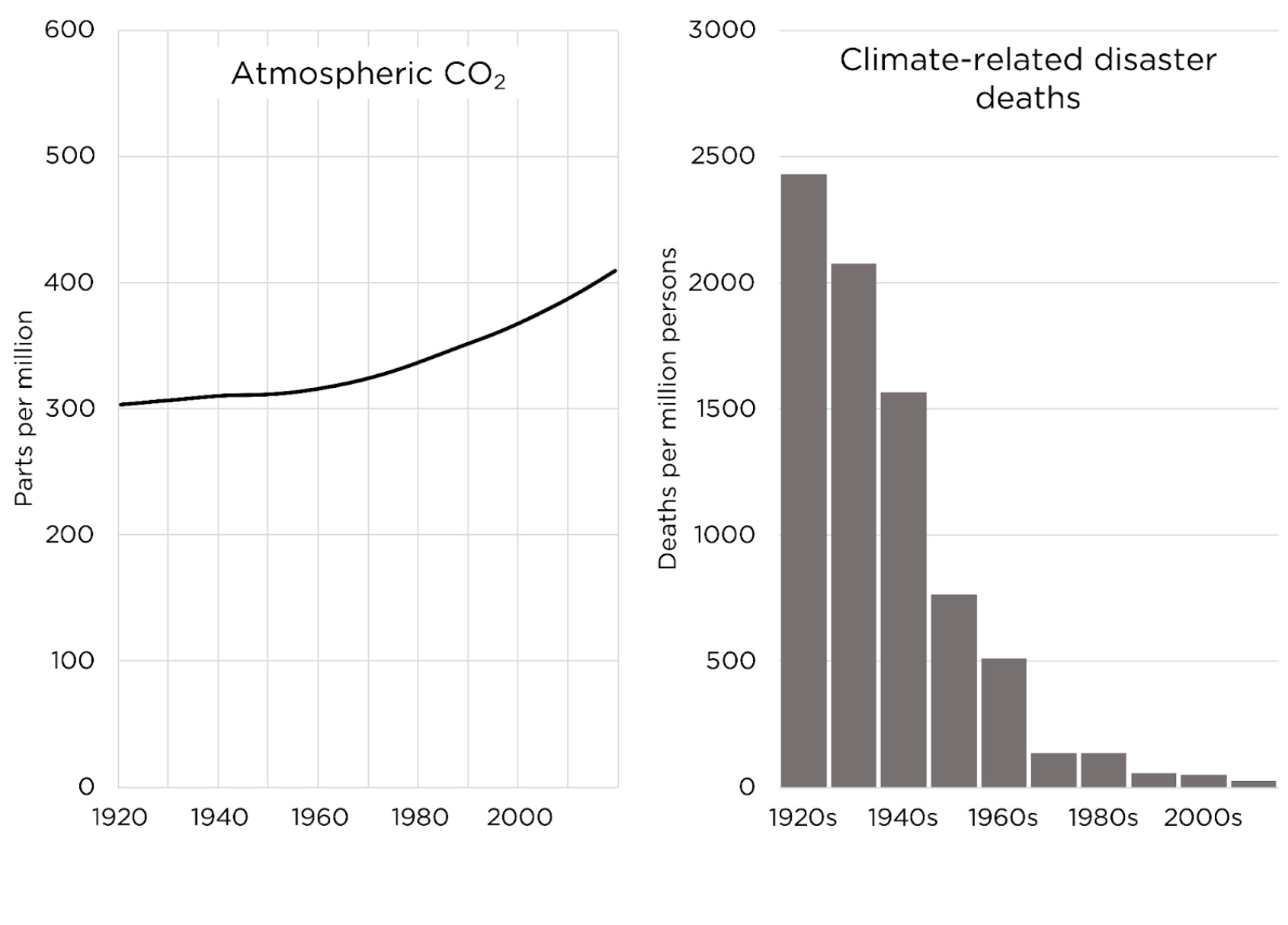
-
Why has climate safety dramatically increased as climate has become warmer?
Because any challenges of warming, including any other climate changes caused by warming, have been overwhelmed by our accelerating ability to master climate. E.g., neutralizing drought via irrigation.
-
Why has humanity’s ability to master climate so far outpaced climate challenges? A fundamental cause is the proliferation of energy, above all from the fossil fuel industry, which powers the machines that enable us to master climate.
-
Machines, largely powered by fossil fuels, have allowed us to:
-
master drought danger via irrigation and crop transport,
-
master temperature danger via heating and air conditioning,
-
master storm danger via building resilient infrastructure plus storm warning and evacuation systems, etc.
-
-
The fact that fossil fuels have driven unprecedented climate safety means that so far the climate-related benefits of fossil fuels have far overwhelmed any climate-related challenges from fossil fuels.
Which means that so far fossil fuels have been a climate hero, not villain.
-
Going forward, any climate impacts from fossil fuels’ CO2 emissions are only a climate problem if they, totally contrary to our experience so far, present challenges that overwhelm the climate mastery benefits of fossil fuels. Mainstream climate science doesn’t show this at all.
The climate safety denial movement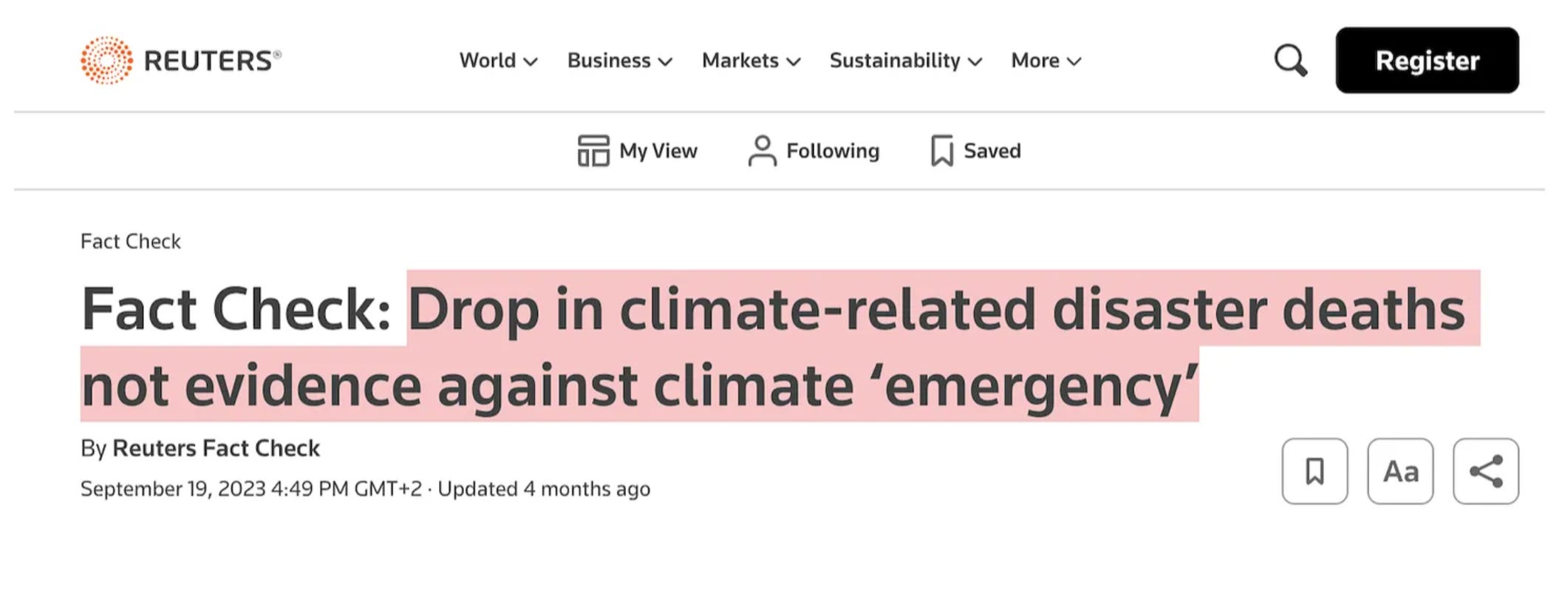
-
Myth: Mainstream science shows that rising CO2 is an “existential threat” that will soon cause global catastrophe and then apocalypse.
Truth: Mainstream science shows that rising CO2 levels will lead to levels of warming and other changes that we can master and flourish with.
-
Myth: If mainstream science concludes that we will experience more warming, storm intensity, or sea level rises, that means catastrophe or worse.
Truth: Given climate mastery, catastrophe could only occur with changes that are a total difference in kind from rising CO2 so far.
-
Climate mastery is so powerful that for CO2 emissions to be apocalyptic enough to justify rapid fossil fuel restriction or elimination, they'd need to have unprecedented impacts, such as
-
Seas rising feet per decade
-
2 times more powerful storms
Science shows nothing like this.
-
-
Myth: More warming is ominous because heat-related death is already such a huge problem.
Truth: Even though Earth has gotten about 1°C warmer, far more people still die from cold than heat (even in India)! Near-term warming is expected to decrease temperature-related mortality.2
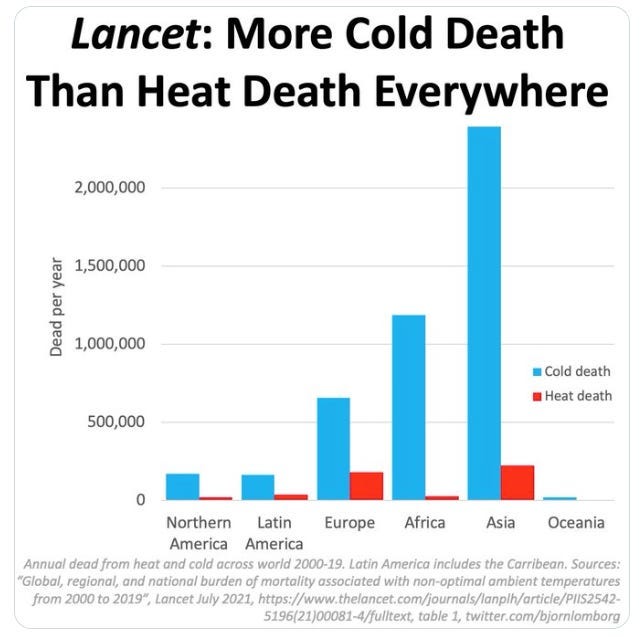
-
Myth: Future warming is ominous because it will be worst in hot areas.
Truth: The mainstream view in climate science is that more warming will be concentrated in colder places (Northern latitudes) and at colder times (nighttime) and during colder seasons (winter). Good news.3
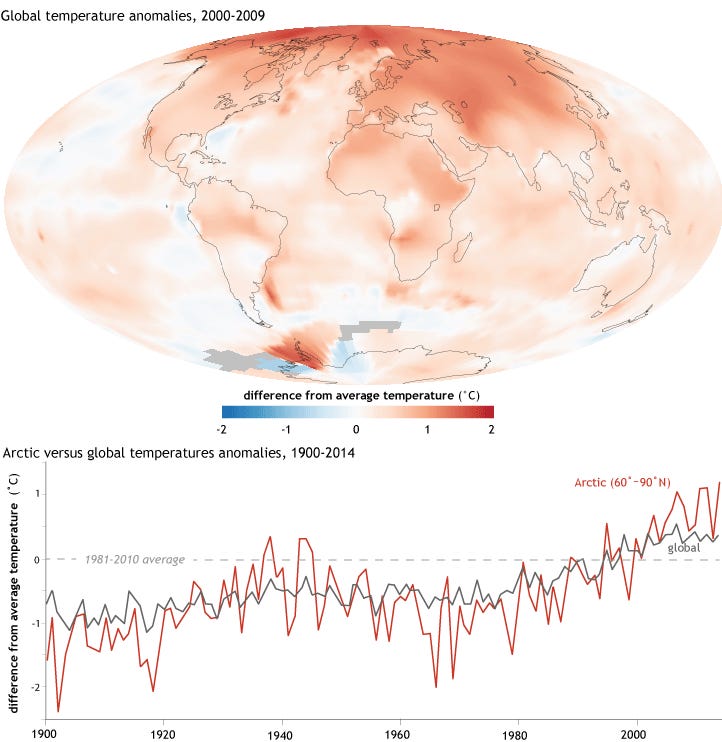
-
Myth: Future warming will accelerate as CO2 levels rise.
Truth: Mainstream science is unanimous that the “greenhouse effect” is a diminishing effect, with additional CO2 leading to less warming.
Even IPCC's most extreme, far-fetched scenarios show warming leveling off.4

-
Myth: We face catastrophically rapid sea level rises, which will destroy and submerge coastal cities.
Truth: Extreme UN sea level rise projections are just 3 feet in 100 years. Future generations can master that. (We already have 100 million people living below high-tide sea level.)5

-
Myth: Hurricane intensity is expected to get catastrophically higher as temperatures rise.
Truth: Mainstream estimates say hurricanes will be less frequent and between 1-10% more intense at 2° C warming. This is not at all catastrophic if we continue our fossil-fueled climate mastery.6

-
Myth: We face catastrophic increases in dangerous wildfires, an “Earth on fire.”
While the media increasingly reports on fires and draws connections to warming, the world burns less than 20 years ago and far less than 100 years ago. Fire danger primarily depends on human mastery.7
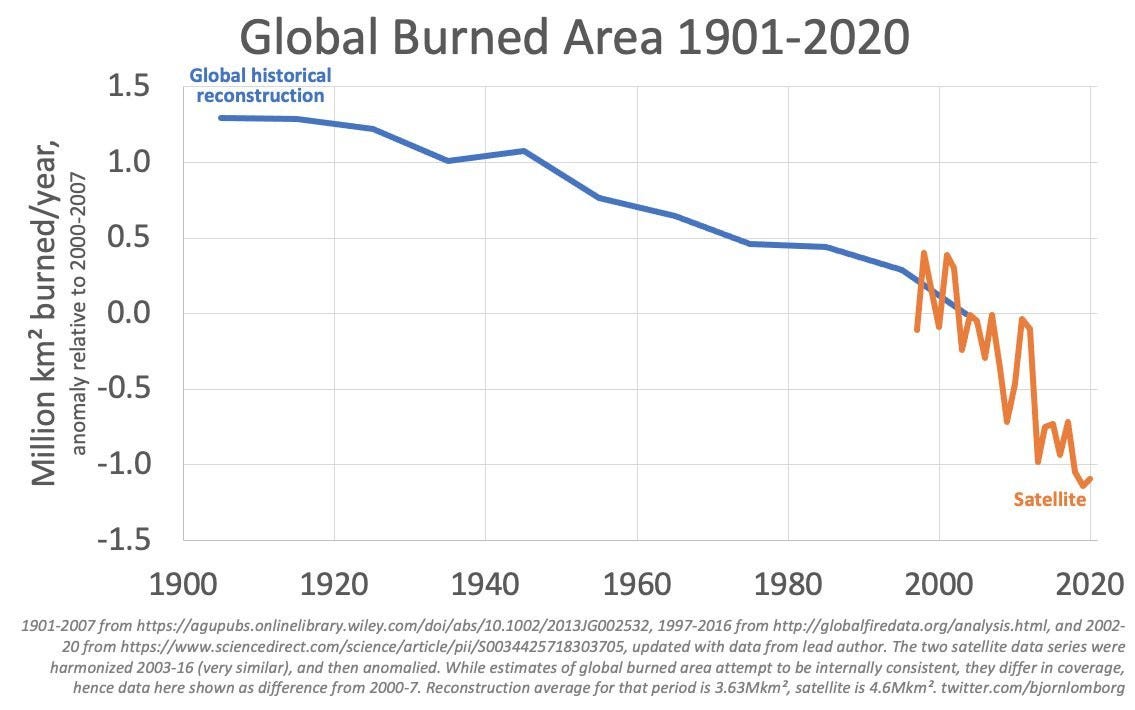
-
Myth: Rising CO2 levels will destroy the planet’s “ecosystems,” and eventually us with them.
Truth: A warmer world, which is also a wetter world, with more CO2, is generally better for life. And increasing mastery gives us more ability to preserve the most valuable species.
-
If we consider the incredible mastery that fossil fuels have given and can continue to give us, and then look at the plausible climate challenges FFs could create, we conclude that mastery will continue to overwhelm challenges—and thus FFs can continue to drive climate safety.
-
Given that the climate mastery we get from fossil fuels will continue to outweigh any climate challenges that come from FFs, government should absolutely not be “addressing climate change” by opposing FFs. That would increase climate danger, among many other terrible outcomes.
-
Those who want to prioritize reducing GHG emissions should do so, not by forcibly depriving other people of energy, but by private actions—above all innovating truly cost-effective alternatives to fossil fuels that people will voluntarily adopt.
-
Not only is innovation the only moral way to reduce greenhouse gas emissions, it is the only globally practical way—because energy-valuing nations like China and India will continue to use fossil fuels until there is a real, cost-effective alternative.8
-
The key to low-CO2 energy innovation is the same as the key to global energy abundance: leave us free to produce and use all forms of energy, including fossil fuels. This requires removing the many obstacles the government puts in the way of cost-effective energy.
-
One impediment toward energy innovation is the anti-development policies that make it take forever to experiment with and develop new energy technologies—all of which involve developing nature.
We need government to liberate domestic development.
-
A huge impediment to energy innovation is the many anti-nuclear policies that have turned nuclear from a cost-competitive form of electricity many decades ago into a cost nightmare today.
We need to unleash nuclear from myriad irrational policies, including “LNT” and “ALARA.”
-
Summary: Government should stop fixating on trying to eliminate climate challenges caused by fossil fuels—i.e., “climate change”—because those challenges can continue to be mastered using fossil fuels.
Government should focus exclusively on energy freedom for both fossil fuels and alternatives.
References
-
UC San Diego - The Keeling Curve
For every million people on earth, annual deaths from climate-related causes (extreme temperature, drought, flood, storms, wildfires) declined 98%--from an average of 247 per year during the 1920s to 2.5 per year during the 2010s.
Data on disaster deaths come from EM-DAT, CRED / UCLouvain, Brussels, Belgium – www.emdat.be (D. Guha-Sapir).
Population estimates for the 1920s from the Maddison Database 2010, the Groningen Growth and Development Centre, Faculty of Economics and Business at University of Groningen. For years not shown, population is assumed to have grown at a steady rate.
Population estimates for the 2010s come from World Bank Data. Our World in Data - Annual CO₂ emissions by world region↩
-
Zhao et al. (2021) - Global, regional, and national burden of mortality associated with non-optimal ambient temperatures from 2000 to 2019: a three-stage modelling study↩
-
NOAA - Climate change rule of thumb: cold "things" warming faster than warm things↩
-
See: Figure 4.40 in IPCC, 2021: Chapter 4. In: Climate Change 2021: The Physical Science Basis.↩
-
Roger Pielke Jr. - What the media won't tell you about ... Wildfires↩
-
As of July 2023, China has over 300 new coal-fired power stations in various planning and construction phases.
Global Energy Monitor - Coal Plant Tracker, Coal Plants by Country (Power Stations)↩
